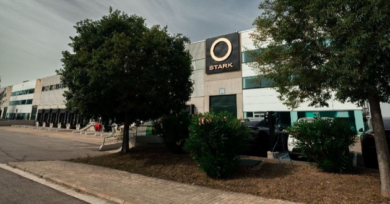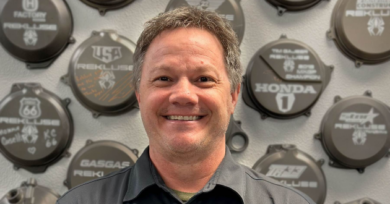Jun. 2, 2008 – ‘The Good Times’ company
By Neil Pascale
Editor
IRVINE, Calif. — Scott Kiyama has spent more of the past two decades working for Kawasaki Heavy Industries in the United States rather than in his native Japan.
In that 20-year period, it is probably safe to say it has never been more difficult to run the U.S. subsidiary of a Japanese manufacturer than it is today.
U.S. consumer confidence, wracked by incremental expense increases, is shaken. The U.S. dollar has weakened, affecting bottom lines for metric manufacturers. Plus, raw materials prices are escalating. Combined, it’s a triple whammy on Japanese OEMs if there ever was one.
“Now is the most challenging time,” concedes Kiyama, the president of Kawasaki Motors Corp., U.S.A.
It is also a time for Kiyama and Co. to do something few in the industry can do with a straight face: celebrate. Through April, Kawasaki’s year-to-date motorcycle retail sales were up roughly 7 percent while the industry as a whole was down 6 percent. The company also has experienced significant market share growth in its rejuvenated PWC line.
So when Kawasaki Public Relations Manager Jan Plessner says, “we’re living up to the ‘Good Times’ company now,” the quote speaks as much about the company’s U.S. sales results as its marketing slogan.
In a recent discussion with Powersports Business at Kawasaki Motors Corp., U.S.A. headquarters in Irvine, Calif., Kiyama discussed how the company has managed to succeed in a struggling economy, how he does not expect layoffs at Kawasaki’s U.S. operations and about the role transportation will play in U.S. powersports sales.
A growing presence
Kiyama, the son of a school teacher and steel worker, took over as president of Kawasaki Motors Corp., U.S.A. close to two and a half years ago after spending the previous four years as the U.S. subsidiary’s vice president.
Within the past few years much has changed regarding Kawasaki’s presence in the on-road motorcycle arena. Four years ago, the company had just slightly more than a 9.5 percent market share in the United States. Now, Kiyama says, that number is roughly 5 percentage points higher and the company hopes to clear the 15 percent milestone soon. It is a huge leap that has put the Japanese manufacturer within shouting distance of on-road market share leaders Honda and Harley-Davidson, both of which are near or above 25 percent, according to Powersports Business estimates.
Kiyama stresses market share is not how Kawasaki judges itself, preferring to place customer satisfaction as the ultimate goal. “Good products, good service, good communication, those are all required” to meet customer expectations, Kiyama says. He also notes “to do the business and to show our performance in the market, of course we’re supposed to keep a certain amount of the market share.”
Kawasaki has been able to keep its ATV market share relatively stable at roughly 9 percent in a segment that has seen recent, notable year-over-year volume loss in the traditional market. Meanwhile Kawasaki is, by Powersports Business estimates, one of the market share leaders in UTV sales among those side-by-side brands sold in powersports dealerships.
“Having a wider variation of products is a strong point for Kawasaki,” Kiyama said, noting the impact of the UTV on the company’s bottom line. Just last year, the company created a separate business unit to handle its new Teryx line, a sportier UTV than the more utility-oriented Mule lineup.
Add the PWC line’s recent success — Kiyama says the company’s Jet Ski market share has increased as much as 50 percent in recent years — and it’s easy to see how parent company Kawasaki Heavy Industries recently reported its fourth consecutive year of increased North American sales.
“We are not buying market share with money,” Kiyama said, “rather we like to improve our Kawasaki brand value, meaning introducing good, attractive products in the market to improve our volume.”
A proactive approach
While much of the business world has steered as far away from the “R” word as possible, Kiyama shows no hesitancy in wading in such waters.
“Sometimes in recession times,” he said, “this is the best time to build a thicker foundation for the future business.”
It is also a time Kiyama believes brings out the true character in people.
“There are two types of human beings: one passive, one proactive,” he said. “One is we cannot do. We cannot sell. We have to compress our costs.
“The other way is proactive. Like, now is the time to prepare for the future.”
There is little question where Kiyama places himself and Kawasaki.
“Once demand hits the bottom and starts to come back, our acceleration must be much, much better than others,” he said.
During that period of lessened demand, Kiyama does not expect Kawasaki to be forced to lay off staff in its U.S. operations. “We are not decreasing people; we are not increasing people,” he said. “We are just asking each person to improve their effort.”
One reason Kawasaki does not expect U.S. layoffs is the steps the company took several years ago to control costs because it had forecasted a slowdown in U.S. sales.
“We forecasted a certain saturation of demand for motorcycles and ATVs almost three-four years ago,” Kiyama said.
Underlining that forecasting was the company’s belief that an established economy, like the one in the U.S., could not sustain the double-digit percentage growth levels seen in the late 1990s and early 2000s.
“We did some future study,” Kiyama said, “and we re-organized our company a little bit to prepare” for the expected slowdown.
Transportation vs. recreation
Could those big growth levels seen a decade ago be brought back by consumers looking at motorcycles as a gas-friendly transportation option rather than just recreation?
Kiyama experienced a similar climate for small-displacement motorcycles when he worked as the director of Kawasaki Heavy Industry’s developing countries. Then, he oversaw operations in a number of countries, from China to Thailand to Indian to Iran to Brazil.
“Those countries still do not have enough available transportation infrastructure so they have to use (small-displacement motorcycles) to go from their house to the main road to get on a bus,” Kiyama said.
Because the infrastructure is so vastly different in the United States, Kiyama does not see a time when motorcycles will change to become a primary transportation option. At least, not until more mass transit is used, meaning scooters or motorcycles would become a means to reach a bus or a subway station rather than driving 20 miles on a freeway to a place of employment.
Kiyama instead sees Kawasaki’s growth opportunities in improving customer communications and in marketing, noting the company’s recent improvements in its grassroots marketing and Internet presence.
“I believe we have been communicating with dealers much, much better than before,” he said. “It is not so easy to do — we’re doing business; they’re doing business.”
Business that has to be looked at past the current challenging climate.
“We have to step back a little bit to look at the medium or long-term trend as much as possible because we’re not a broker that sells and runs away,” Kiyama said. “We’ll stay here for a long time and we have to transfer our current position for our future generations. We have to make a good foundation right now.”




